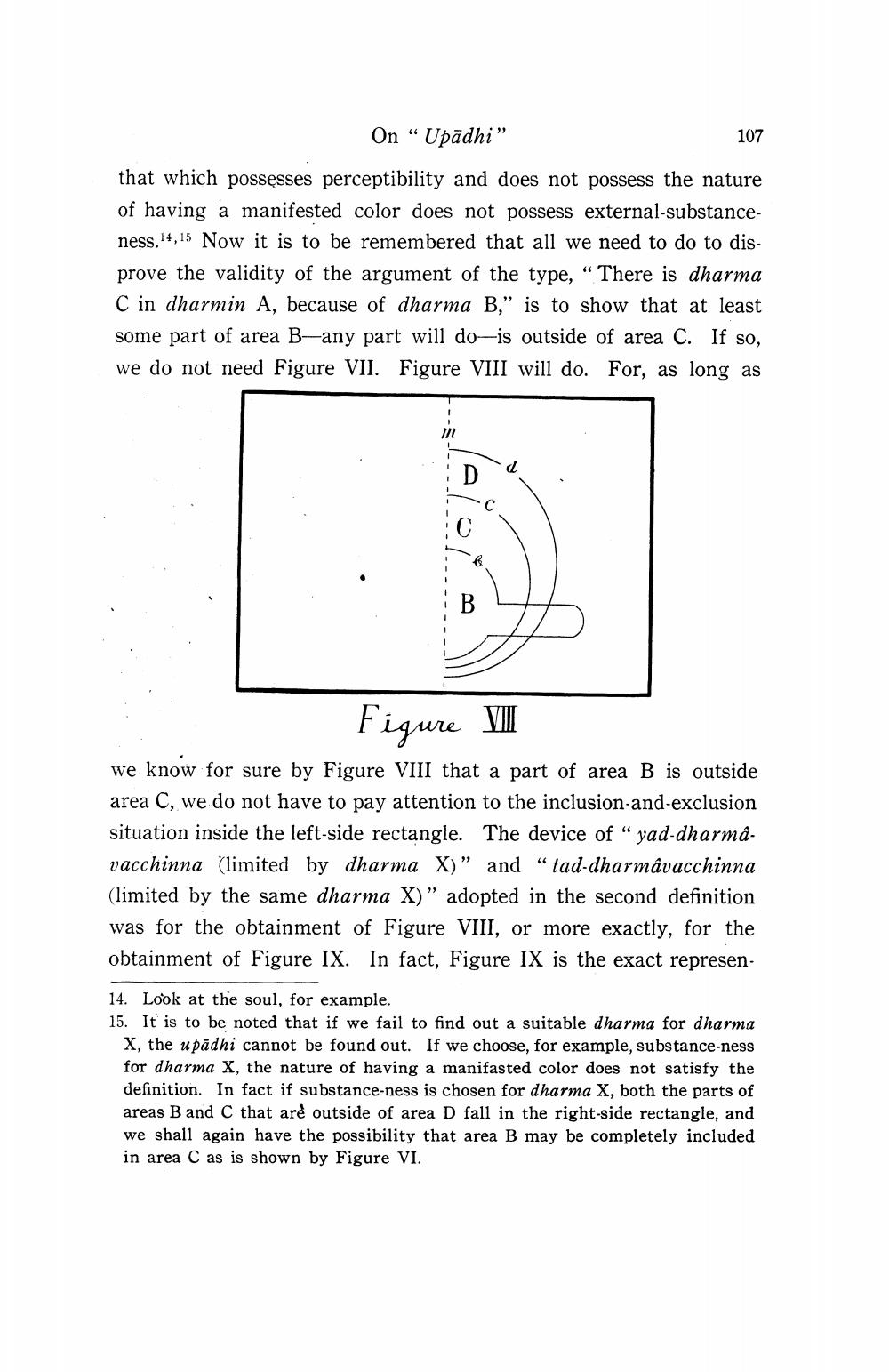________________
On “Upādhi”
107
that which possesses perceptibility and does not possess the nature of having a manifested color does not possess external-substanceness.4,15 Now it is to be remembered that all we need to do to disprove the validity of the argument of the type, “There is dharma C in dharmin A, because of dharma B,” is to show that at least some part of area B-any part will do-is outside of area C. If so, we do not need Figure VII. Figure VIII will do. For, as long as
J-----
Figure II
we know for sure by Figure VIII that a part of area B is outside area C, we do not have to pay attention to the inclusion-and-exclusion situation inside the left side rectangle. The device of " yad-dharmavacchinna (limited by dharma X)” and “tad-dharmâvacchinna (limited by the same dharma X)” adopted in the second definition was for the obtainment of Figure VIII, or more exactly, for the obtainment of Figure IX. In fact, Figure IX is the exact represen
14. Look at the soul, for example. 15. It is to be noted that if we fail to find out a suitable dharma for dharma
X, the upādhi cannot be found out. If we choose, for example, substance-ness for dharma X, the nature of having a manifasted color does not satisfy the definition. In fact if substance-ness is chosen for dharma X, both the parts of areas B and C that are outside of area D fall in the right-side rectangle, and we shall again have the possibility that area B may be completely included in area C as is shown by Figure VI.




